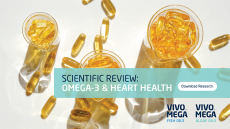Dairy compounds promote the survival of B. infantis in the intestine – study

Bifidobacteria can synthesize polysaccharides, which are thought to possess postbiotic properties and have been recently described as potent modulators of the gut microbiota. These polysaccharides also aid in probiotic potential of biffidobacteria through increased tolerance of the gastrointestinal tract conditions.
Bioactive components such as milk fat globule membrane (MFGM) form some of the ways that manufacturers use to keep probiotics intact as they travel through the gut. Due to MFGM’s health benefits – including its ability to improve brain development in infants and prevent cardiometabolic diseases among others – researchers from US, Mexican and Danish research institutions hypothesized that milk phospholipids (MPL) could bolster the survival rate of Bifidobacterium longum subsp. infantis by increasing polysachharide production.
To test their theory, they looked at how MPL affected the survival of B. infantis during digestion, MPL’s effect on bacterial surface properties and track changes in adhesion to goblet cells in the intestine.
The researchers isolated a milk phospholipid ingredient from MFGM beta-serum powder, created an environment suitable for bacterial growth and inoculated the B. infantis strain, incubating it with or without MPL.
During simulated digestion trials, the researchers found that MPL improved the resilience of B. infantis at the end of the intestinal phase while decreasing adhesion to goblet cells. There was no evidence that the ingredient boosted the probiotic’s survival during earlier digestive phases, however.
MPL’s ability to attach to the probiotic bacteria was further tested to check how the bacteria interacts with the intestinal mucus; the trial showed that the probiotic bacteria’s adherence to the intestinal goblet cells significantly decreased after three hours compared with the results from the in vitro trial.
“The decreased, or more negative, surface charge of B. infantis in response to MPL suggests attachment of MPL at the surface or an alteration in the composition of the cell surface, potentially through changes in surface carbohydrates and/or proteins,” the researchers said.
The study also found that MPL treatment was linked with changes in the lipid profile, with the researchers exploring the production of bound polysaccharides next relative to the presence of MPL, with data suggesting that the ingredient had an enhancing role in bound polysaccharides production in B. infantis.
In conclusion, the study found that MPL-rich ingredients promote the survival of B. infantis at the end of the intestinal phase by at least 7%, induce a stress-resistance surface protein, and yield greater bound polysaccharide production.
Source:
Milk phospholipids protect Bifidobacterium longum subsp. infantis during in vitro digestion and enhance polysaccharide production
Authors: Erica Kosmerl, Brianda D. González-Orozco, Israel García-Cano, Joana Ortega-Anaya, Rafael Jiménez-Flores
Published: 6 November 2023, Frontiers in Nutrition
DOI: 10.3389/fnut.2023.1194945











